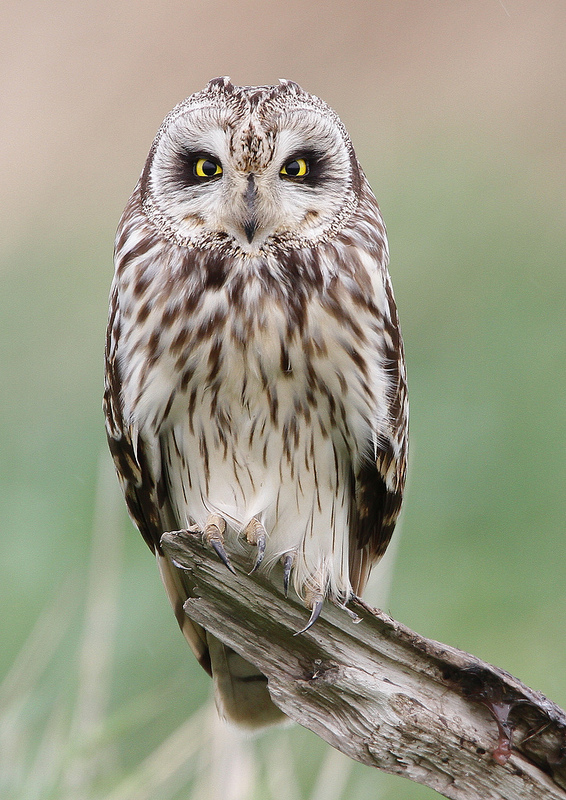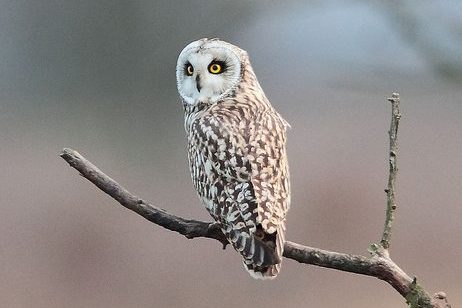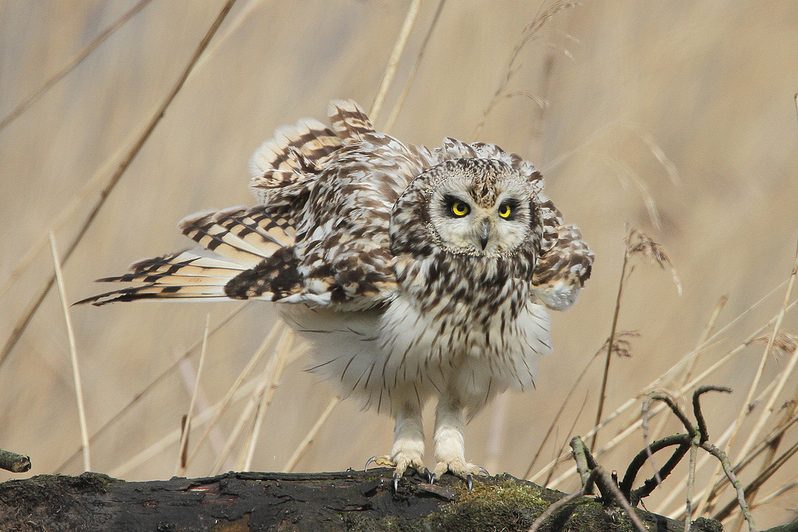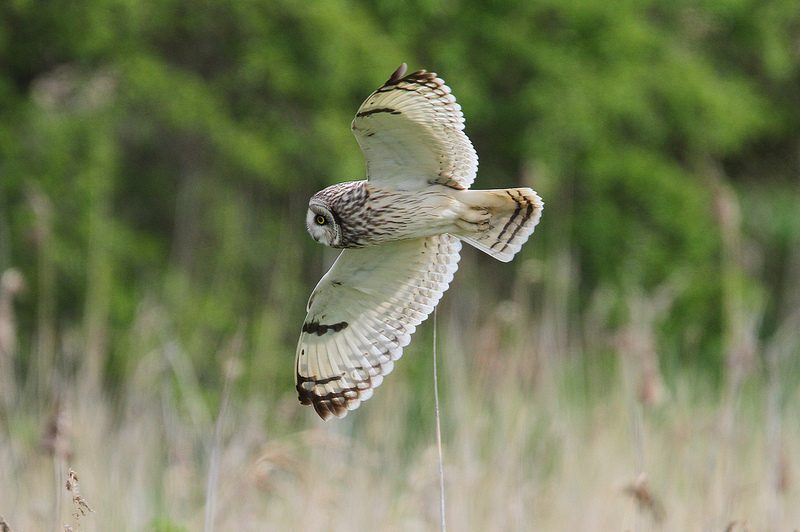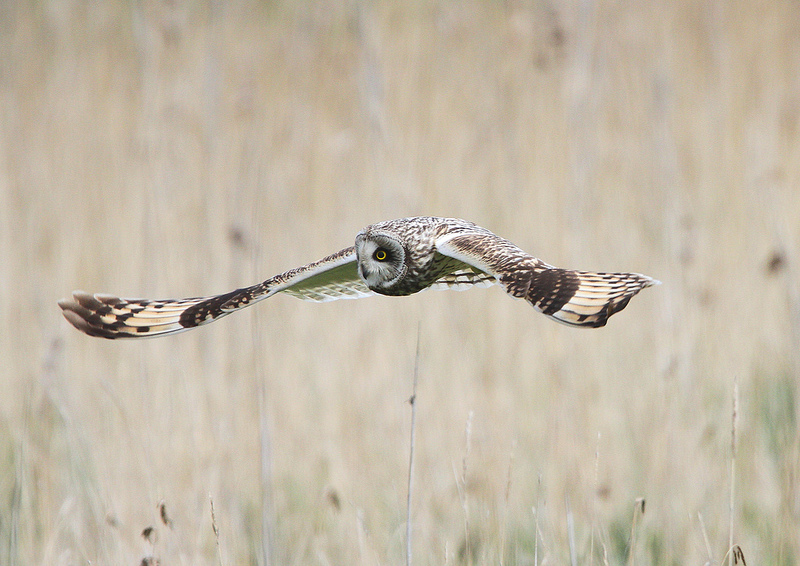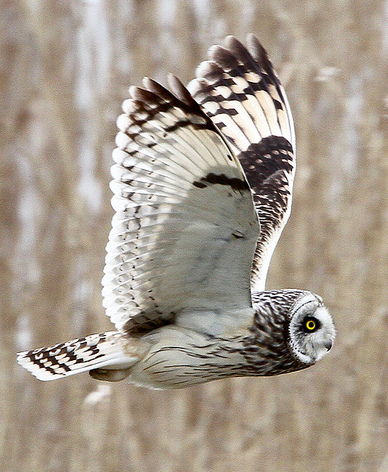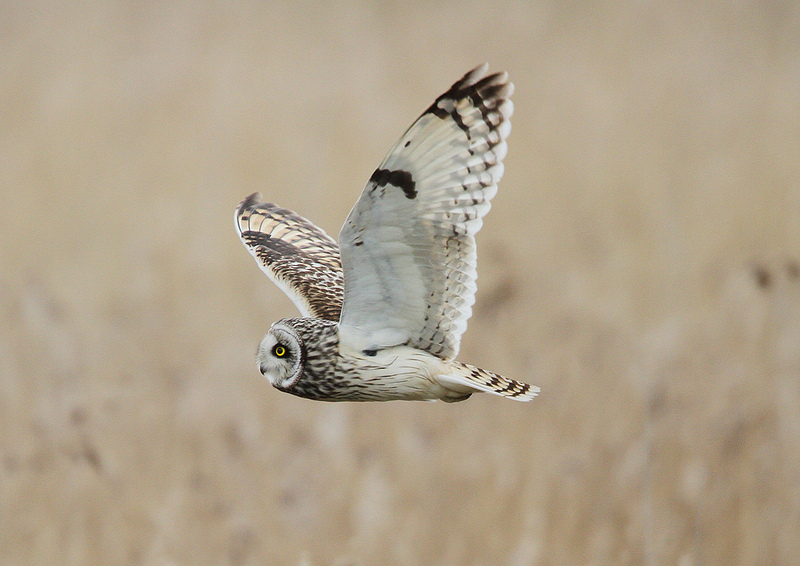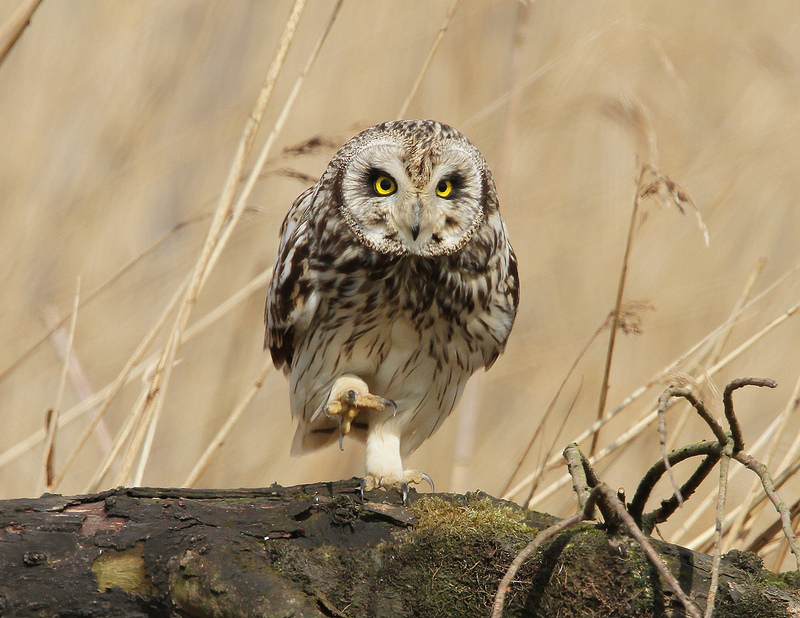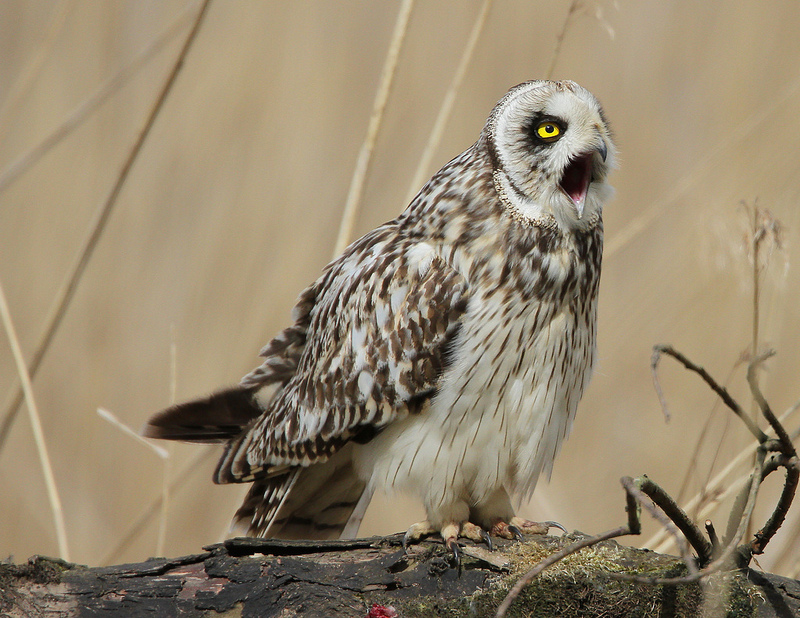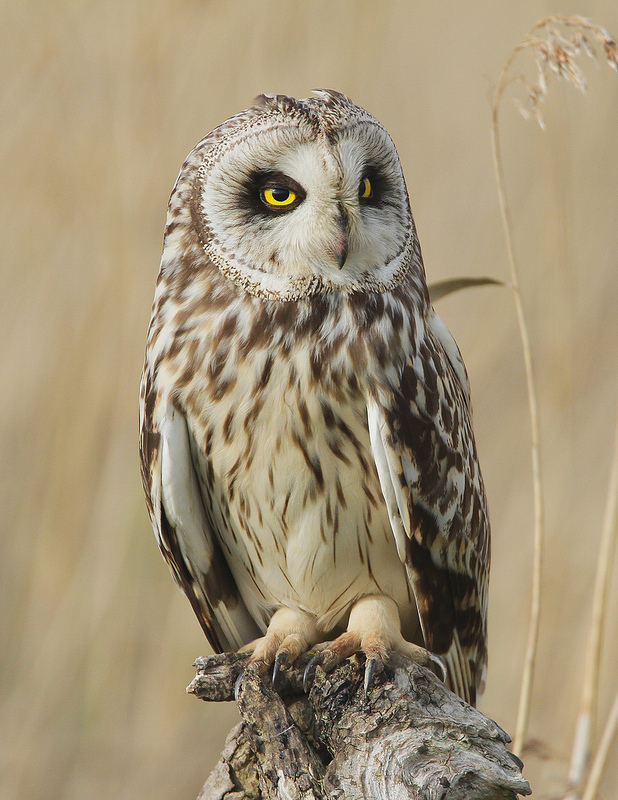Description:
Our most diurnal owl (active during the day). Its body plumage is brown, spotted and streaked with buff, yellow and white. It is pale beneath with a boldly streaked chest. The yellowish facial disc with bright yellow eyes and short ‘ear tufts’ which are rare to see in the field.
Distribution:
Northern parts of the UK and parts of the south east coast. During the winter birds from Scandinavia will migrate to most of southern England.
Habitat:
Open grassy moorland, marshes, sand dunes; in winter frequents grassy marshes and grazing meadows, also adjacent arable fields and moors.
Diet:
Almost exclusively (88% of their diet) being small mammals, mice, voles and shrews. The remainder is made up from birds and possibly immature rats.
Breeding:
Nests in a scrape on the ground camouflaged by long grass or reeds. Between 5 and 8 eggs usually laid in April, incubation is on average 27 days.
Call:
The male’s song is a soft, deep “boo-boo-boo-boo”. Their alarm call is an almost Jackdaw-like, “chef-chef-chef”.

